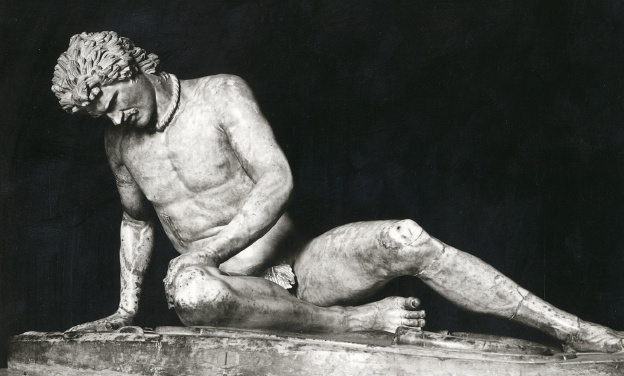Document 5-5: The Dying Gaul (ca. 230–220 B.C.E.)
A Hellenistic Depiction of Human Suffering
In 278 B.C.E, tribes from Gaul (modern France) invaded Greece and later attacked the Greek cities in Asia Minor. One of the Hellenistic kingdoms, Pergamum, defeated the Gauls and later set up a massive monument to commemorate their victory. The original bronze sculpture of this figure has been lost; this Roman copy was discovered during excavations in the seventeenth century. The warrior’s only adornment, a torque, and his hairstyle identify him as a Gallic warrior.

Dying Gaul, copy of a Greek original of ca. 230–
READING AND DISCUSSION QUESTIONS
- What clues does the sculpture offer that its subject is dying and not merely wounded or resting? How can we tell this from his body and from his facial expression?
- What emotions does this statue evoke? How might the viewer have been meant to respond to it?